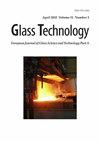Network Automation
IF 0.3
4区 材料科学
Q4 MATERIALS SCIENCE, CERAMICS
Glass Technology-European Journal of Glass Science and Technology Part a
Pub Date : 2023-08-02
DOI:10.47672/ejt.1547
引用次数: 0
Abstract
Purpose: The article "Network Automation in the Contemporary Economy" explores the concepts and methods of effective network management. The application stack, Jinja template engine, automation architecture, Nornir inventory management, application flow, logging, debugging, and live code testing are just a few of the subjects it covers. Network administrators are more important as digital technologies evolve quickly in order to maintain a safe and dependable network connection. The purpose of this article is to give network administrators the information and abilities they need to successfully traverse the intricacies of network management. It starts by going through the application stack and explaining the roles and relationships between each layer. The Ninja template engine is then described, along with an explanation of how its potent grammar makes network configuration management simple. Methodology: The research design employed in this study is a combination of qualitative and quantitative approaches. It involved an extensive literature review to gather existing knowledge on network automation and management practices. Additionally, empirical data was collected through surveys and interviews with network administrators to understand their experiences, challenges, and perspectives on network automation. Findings: The study found that network automation offers numerous benefits, including increased efficiency, reduced human errors, and enhanced network security. The application stack was identified as a critical component of network architecture, and its proper management can significantly impact network performance. The Jinja template engine proved to be an effective tool for simplifying network configuration tasks and promoting standardization across the network infrastructure. Recommendations: To policymakers, we recommend investing in training programs and resources to equip network administrators with the necessary skills to implement and manage network automation effectively. Developing clear guidelines and standards for network automation can also help organizations adopt automation practices seamlessly. Theory: The study was informed by the "Network Automation Theory," which posits that automating network management tasks can streamline operations, enhance reliability, and free up human resources for more strategic initiatives. The theory suggests that proper implementation of automation tools and frameworks can lead to a more agile and resilient network infrastructure. The validation of the theory was achieved through empirical data collected from network administrators and their experiences with network automation. The findings aligned with the propositions of the theory, confirming that network automation indeed brings significant benefits to organizations. Policy: For policymakers, we propose the formulation of a comprehensive policy framework that encourages the adoption of network automation technologies. The policy should focus on providing financial incentives for businesses to invest in automation tools, fostering partnerships between government and private sectors to promote knowledge exchange, and establishing regulatory guidelines to ensure network security and data privacy in automated environments. Practice: To network administrators and practitioners, we recommend staying updated with the latest advancements in network automation technologies and tools. Investing time in training and upskilling can help practitioners gain expertise in using automation frameworks like Nornir and Jinja template engine. Additionally, fostering a culture of continuous learning and experimentation within organizations can lead to successful implementations of network automation practices.网络自动化
目的:本文“当代经济中的网络自动化”探讨了有效网络管理的概念和方法。应用程序堆栈、Jinja模板引擎、自动化架构、Nornir库存管理、应用程序流、日志记录、调试和实时代码测试只是它涵盖的几个主题。随着数字技术的快速发展,维护安全可靠的网络连接,网络管理员变得更加重要。本文的目的是为网络管理员提供成功地处理错综复杂的网络管理所需的信息和能力。本文首先介绍应用程序堆栈,并解释每一层之间的角色和关系。然后描述了Ninja模板引擎,并解释了其强大的语法如何使网络配置管理变得简单。研究方法:本研究采用定性与定量相结合的研究设计。它涉及广泛的文献综述,以收集网络自动化和管理实践的现有知识。此外,通过对网络管理员的调查和访谈收集了经验数据,以了解他们在网络自动化方面的经验、挑战和观点。研究结果:研究发现,网络自动化提供了许多好处,包括提高效率、减少人为错误和增强网络安全性。应用程序堆栈被认为是网络体系结构的一个关键组件,其适当的管理可以显著影响网络性能。事实证明,Jinja模板引擎是简化网络配置任务和促进跨网络基础设施标准化的有效工具。建议:对于决策者,我们建议投资培训计划和资源,使网络管理员具备必要的技能,以有效地实施和管理网络自动化。为网络自动化制定明确的指导方针和标准也可以帮助组织无缝地采用自动化实践。理论:该研究由“网络自动化理论”提供信息,该理论认为自动化网络管理任务可以简化操作,提高可靠性,并为更具战略性的举措释放人力资源。该理论表明,自动化工具和框架的适当实施可以带来更灵活、更有弹性的网络基础设施。通过从网络管理员及其网络自动化经验中收集的实证数据来验证理论。研究结果与该理论的命题一致,证实了网络自动化确实给组织带来了显著的好处。政策:对于政策制定者,我们建议制定一个全面的政策框架,鼓励采用网络自动化技术。该政策应侧重于为企业投资自动化工具提供财政激励,促进政府和私营部门之间的伙伴关系,以促进知识交流,并制定监管准则,以确保自动化环境中的网络安全和数据隐私。实践:对于网络管理员和实践者,我们建议随时了解网络自动化技术和工具的最新进展。在培训和技能提升上投入时间可以帮助从业者获得使用自动化框架(如Nornir和Jinja模板引擎)的专业知识。此外,在组织内部培养一种持续学习和实验的文化可以导致网络自动化实践的成功实现。
本文章由计算机程序翻译,如有差异,请以英文原文为准。
求助全文
约1分钟内获得全文
求助全文
来源期刊
CiteScore
0.30
自引率
0.00%
发文量
0
审稿时长
>12 weeks
期刊介绍:
The Journal of the Society of Glass Technology was published between 1917 and 1959. There were four or six issues per year depending on economic circumstances of the Society and the country. Each issue contains Proceedings, Transactions, Abstracts, News and Reviews, and Advertisements, all thesesections were numbered separately. The bound volumes collected these pages into separate sections, dropping the adverts. There is a list of Council members and Officers of the Society and earlier volumes also had lists of personal and company members.
JSGT was divided into Part A Glass Technology and Part B Physics and Chemistry of Glasses in 1960.

 求助内容:
求助内容: 应助结果提醒方式:
应助结果提醒方式:


